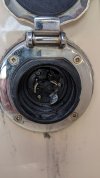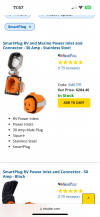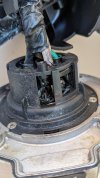calcman05
Member
- Joined
- Feb 3, 2024
- Messages
- 20
- Fluid Motion Model
- C-302 SC
- Vessel Name
- DINGLEHOPPER
Just got to Friday harbor on my 2015 R31 and was going to plug into shore power. Shore power 2 is working fine but shore power 1 is fried, black, and charged on the female end of the cord and the male plug connection on my boat. I'm going to need a new cord as well as a new plug portion for the boat. Anybody have any idea what part I need for my boat to replace the plug?
I hope this was just a fluke and not an indicator of larger problems.

I hope this was just a fluke and not an indicator of larger problems.



